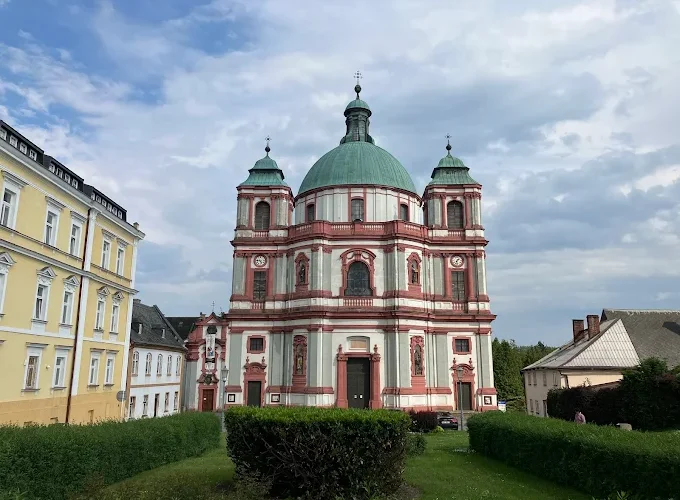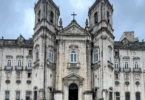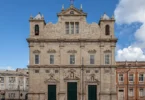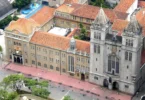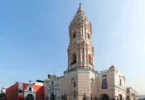Introduction
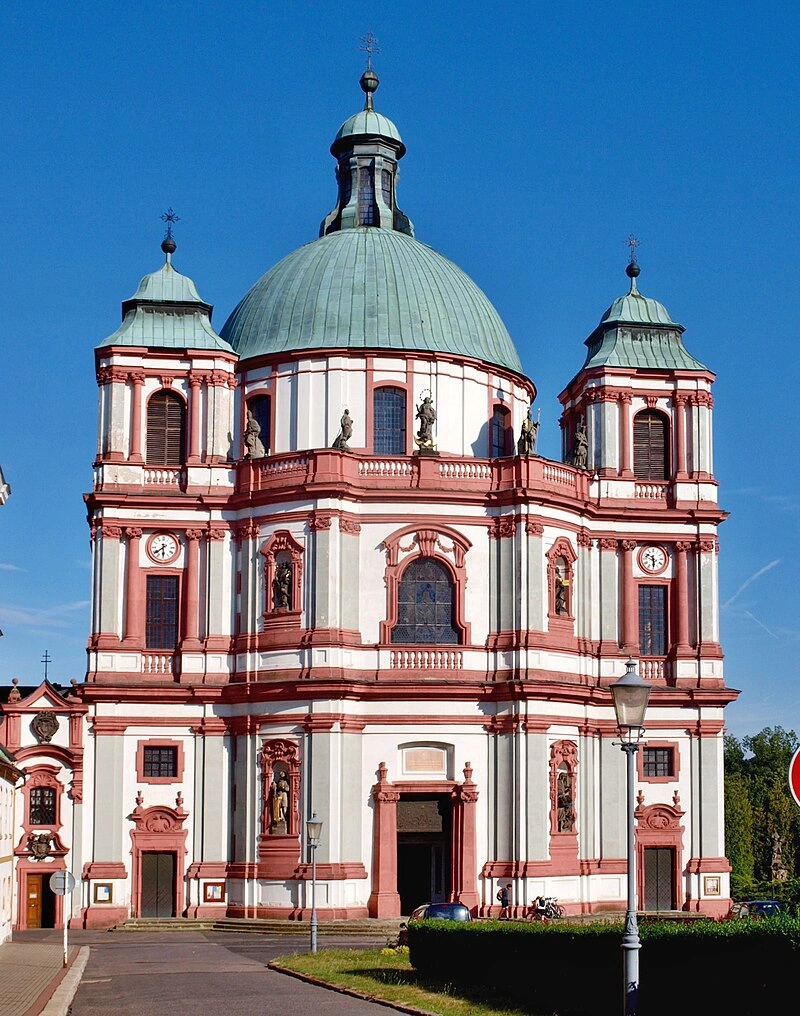
The Basilica of Saint Lawrence and Saint Zdislava is a striking Baroque church that stands in the heart of the Dominican monastery grounds in Jablonné v Podještědí, in the Liberec Region of northern Czechia. It’s been a minor basilica since 1996, a recognition of its spiritual and historical importance. On April 28, 2008, it was officially declared a national cultural monument of the Czech Republic. The church is deeply tied to the legacy of Saint Zdislava, who lived and served here, and it remains an important place of pilgrimage and prayer to this day.
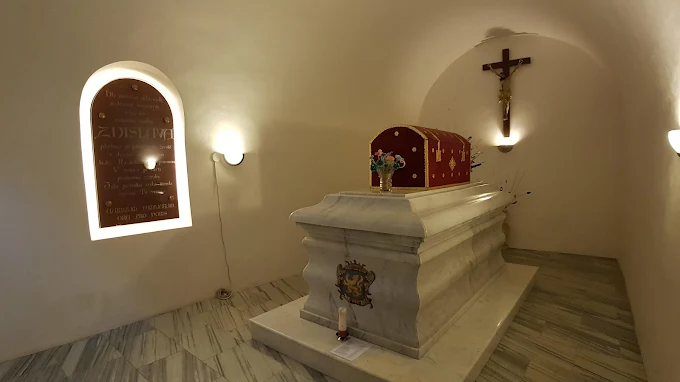
The story of the Basilica of Saint Lawrence and Saint Zdislava really begins in 1690, when construction started on a brand-new Dominican convent in Jablonné v Podještědí. Just a few years later, in 1696, work began on the church itself. It wasn’t just any church this was designed by none other than Johann Lucas von Hildebrandt, one of the most respected Baroque architects of his time. He was based in Vienna and known across Europe for his dramatic, ornate buildings. The day-to-day work on the church was led by Pietro Bianchi, an experienced builder, and he stayed in charge until around 1706. That’s when things changed. František Antonín Count Berka of Dubá, the main sponsor of the church, passed away. His daughter Rozálie Berková, who had married into the powerful Kinsky family, stepped in to try and keep the dream alive. She poured her energy and money into getting the church completed, aiming for it to be finished by 1713. She even had special commemorative medals made in Kremnica to mark the occasion. But despite her best efforts, things didn’t go according to plan. Money ran short. The grand design proved too ambitious. Construction dragged on, and the pressure seemed to take its toll. Tragically, Rozálie passed away on New Year’s Day in 1714, reportedly after losing her mind.
Even before that, problems had already started. By 1706, it was clear the budget couldn’t stretch to everything Hildebrandt had imagined, and he eventually stepped away from the project. From 1708 to 1711, another builder, Domenico Perini, picked up where Bianchi left off. Perini made some changes to the original plans, especially when it came to the upper floors and the massive dome that still dominates the building today. After decades of stop-and-start construction, the church was finally finished and consecrated on August 4, 1729. It was a proud moment for the town and the Dominican community. But the story doesn’t end there. In 1788, a fire swept through and destroyed part of the church’s interior and equipment, dealing a heavy blow to its beauty and function. Still, through all the struggle deaths, delays, financial collapse, even fire the church stood strong. And it’s that same resilience that makes this basilica not just a beautiful building, but a symbol of faith, persistence, and local pride.
Architecture of Basilica of St. Lawrence and St. Zdislava, Jablonné v Podještědí, Czechia
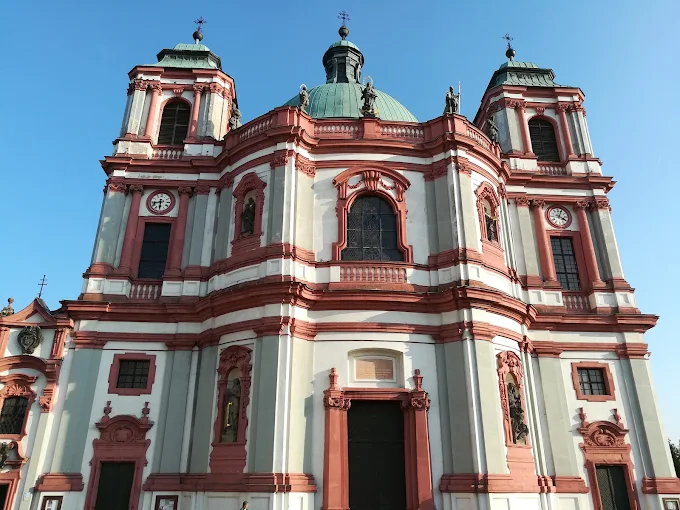
Architect : Jan Lukas Hildebrandt
Architectural style: Baroque architecture
The layout of the church follows the project of the architect Guarino Guarini for the church of San Lorenzo in Turin and its Viennese variant, the church of St. Peter, also designed by Hildebrandt. The church in Jablonné is based on the intersection of curves and can therefore be considered an important early evidence of the penetration of dynamic elements into Czech Baroque architecture and a precursor of later buildings of the Czech radical (dynamic) Baroque.
Exterior
From the outside, the church looks like a typical Baroque building with a rectangular shape and a monastery attached. But inside, it’s built in a more complex shape an elongated cross formed by overlapping ellipses. At the top is a tall dome with a copper roof that stands out and can be seen from far away. The front of the church is divided into three parts and decorated with three large entrances. There are two prism-shaped towers on the sides, which are two stories high but were never fully finished at the top, so the upper parts look a bit bare. The lower sections of the towers have corner pilasters, and the second floors have semi-columns. The windows are tall and rounded at the top. The risalit, or center section of the front, has pilasters and niches, including a 1713 semi-circular window, and is slightly curved inward. Above it is a balustrade. The entire façade is richly decorated with statues of Dominican saints made by Franz Bienert in 1711. You can see statues of St. Zdislava, St. St. Lawrence Dominic, and St. Thomas Aquinas. Along the attic level are statues of the Madonna and saints like John of Nepomuk, Adalbert, and John the Baptist. The side walls of the church are smooth with just slight projections and tall, rounded windows. At the back, the building ends with a rounded apse.
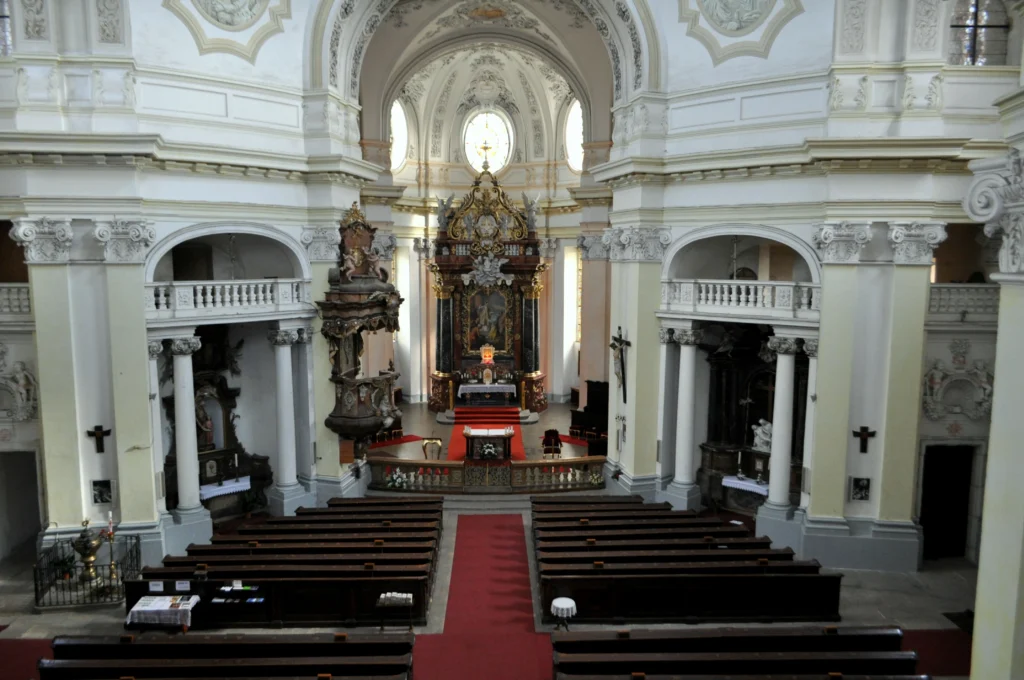
Interior
Inside, the church is centered around an octagonal space. The nave and presbytery stretch out to the west and east and are shaped like ellipses, each covered with cross vaults. Two windows and a vault in the shape of a shell connect the presbytery to the apse. To the north and south, two smaller elliptical chapels extend out, each with cylindrical vaults. Between these four main spaces are large pillars. These pillars are connected to rectangular chapels with straight lintels, supported by two columns. Stands or balconies are atop the lintels. The corners of the pillars have pilasters that support the entablatures, which in turn hold up the pendentives of the dome’s circular drum. The drum has eight windows letting in light. Karel Krattner’s paintings from 1852 are used to decorate the dome. Blessed Zdislava and the Four Evangelists are depicted in chiaroscuro in some of these works. Corridors with cross-shaped arches connect all of the spaces around the church’s center. The porch leading in is Baroque in style with wavy lines and rests on two columns. The usual entrance for visitors is a side door under the north tower.
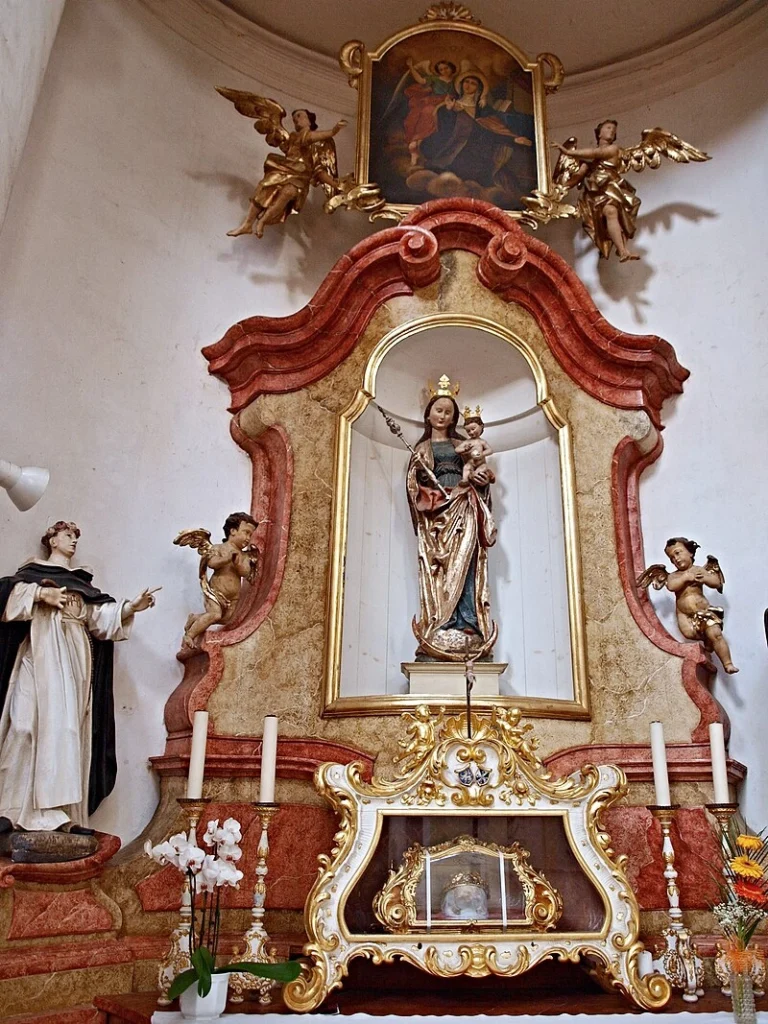
Equipment and Decorations
In the first chapel on the left, there’s an altar dedicated to the Virgin Mary. It features a Rococo cartouche from about 1770 and a niche holding a late Gothic statue of the Madonna dating back to around 1510. Additionally, a painting of St.Teresa from 1853. From the original construction period, statues of St.Catherine of Siena and St. Henry of Susa remain. The relics of Saint Zdislava are kept here in a glass case from 1908, inside a crypt beneath the altar. A 1732 Baroque grille made of wrought iron guards the crypt’s entrance. Inside the crypt, you’ll find 24 copper paintings telling the story of St. Zdislava, painted in 1660 after older engravings. The middle chapel on the left holds a pseudo-Baroque altar dedicated to the Sacred Heart, built in 1911. It’s decorated with Baroque statues of St. Peter and St. Paul from the beginning of the church and a more recent painting of Christ. Nearby is a classicist confessional from the late 18th century and a Rococo baptismal font from 1764, decorated with tin angels. Above it hangs an old copy of the Zbraslav Madonna from the 18th century. The smaller left chapel has an altar for St. Anne, with a Rococo cartouche and statues added in 1886. It also features a painting of St. Vincent Ferrer from 1764. The pulpit here is classicist, from 1789, made by J. Neumann, and includes a bust of St. Peter. A Baroque painting titled “The Passion of St.” can be found close to the corridor of the sacristy.Lawrence, likely the original main altar painting.
The main altar itself is a pseudo-Baroque canopy made in 1898 by V. Angst, featuring a painting of St. Lawrence by Karel Krattner. A 20th-century painting of St. Zdislava was added later. The choir pews are from the late 18th century and decorated in Rococo style. Near the entrances to the sacristy and the opposite storage room are marble busts of František Antonín Berka of Dubá and Rozálie Berková (who married Kinská). These busts, made around 1700 by Jan Blommendael, are fine examples of Dutch portrait sculpture in the Czech lands. On the right side of the main altar, a small chapel holds the Baroque altar of the Holy Cross from 1718. It’s made of marble and columns, created by M. Gugel. It includes later additions, such as an 1881 Pietà sculpture and a Rococo-framed painting of the Madonna. The middle right chapel is dedicated to the Holy Rosary, built in 1732. It features elaborate sculptures showing the Virgin Mary with the Infant Jesus handing the Rosary to St. Dominic, St. Thomas Aquinas, St. Albert the Great, God the Father, and angels. A painting of St. Alois in a classicist frame from after 1789 hangs here as well. There are two other confessionals dating from the late 18th century. The last small chapel on the right houses the Baroque altar of St. Joseph. It has a cartouche shape with a painting of St. John of Nepomuk from the time the church was built, and statues of St. Joseph and King David made between 1885 and 1889. The Stations of the Cross were painted by Johann Birnbaum in 1854. The organ dates to 1859 and is made in pseudo-Rococo style.
In Popular Culture
The Church of St. Lawrence also appears in literature. It’s visited by characters in Miloš Zapletal’s book Owl’s Cave. The book includes illustrations of the church’s façade by Marek Čermák.
Feast Day
Feast Day : January 4 – St. Zdislava August 10 – St. Lawrence
The feast day of St. Zdislava is celebrated on January 4, and St. Lawrence is honored on August 10. As the basilica in Jablonné v Podještědí is dedicated to both, both dates are likely observed, but January 4 holds special local importance due to St. Zdislava’s relics being housed there.
Church Mass Timing
Monday to Friday : 6:00 p.m.
Saturday : 10:00 a.m.
Sunday : 7:30 a.m. and 10:00 a.m.
Church Opening Time:
Monday : Closed
Tuesday to Sunday : 9:00 am – 5:00 pm
Contact Info
Address : Basilica of Saint Lawrence and Saint Zdislava
Klášterní 33, 471 25 Jablonné v Podještědí, Czechia
Phone : +420 602 858 800
Accommodations
Connectivities
Airway
Basilica of St. Lawrence and St. Zdislava, Jablonné v Podještědí, Czechia, to Hodkovice Airport, distance 36 min (42.2 km) via Route 13 and Route 35.
Railway
Basilica of St. Lawrence and St. Zdislava, Jablonné v Podještědí, Czechia, to Jablonné v Podještědí Railway Station, distance between 2 min (700.0 m) via Švermova.

